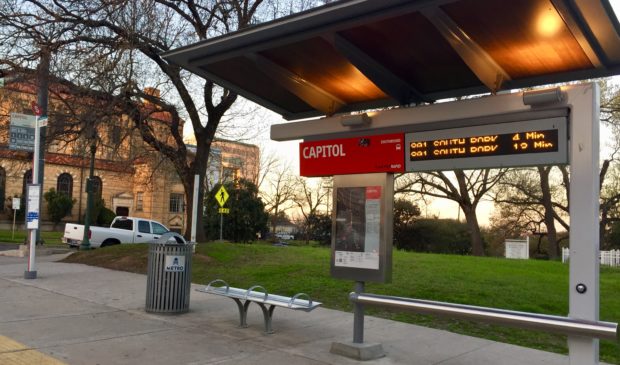ULI proposes affordability-centered upgrade to transit-oriented development
Monday, September 14, 2020 by
Ryan Thornton Housing costs in Austin are skyrocketing, bringing the average home sale price from $179,250 in 2010 up to nearly $385,000 this year. Factor in the transportation costs of car ownership, and median income isn’t even close to keeping up with the increase.
A new report from Urban Land Institute Austin proposes a partial solution to the city’s affordability woes – a new focus on walkable, equitable mixed-use projects along public transit lines.
The report identifies 1,350 acres of land that are well-located for the denser, less car-centric, transit-oriented development zoning overlay, a designation allowing lower parking minimums, smaller block sizes, more residents and a compact mix of office, retail and residential uses.
In order to take full advantage of these parcels and net the most affordable housing units, the report argues against the city’s practice of crafting individual regulating plans with different zoning entitlements in each transit-oriented development. In its place, the report makes a case for opening up a comprehensive transit-oriented development program with uniform base zoning and design standards for more properties near high-frequency bus stops. It also advises the city to get rid of the fee-in-lieu option for transit-oriented density bonuses and guarantee affordable housing units on-site.
“There is no less expensive area in which affordable units can be provided more efficiently or at a lower cost than a (transit-oriented development),” the report says.
A total of nine TOD districts have been created since City Council adopted the new zoning overlay in 2005. Of those, only three – Plaza Saltillo, MLK Jr. Boulevard and Lamar Boulevard/Justin Lane – have completed the planning process for the zoning designation, although transit-oriented development principles are also incorporated in plans for mixed-use projects at the Highland and Lakeline MetroRail stations. Lakeline, MLK and Plaza Saltillo each contain some mix of on-site income-restricted units.
New policies modeled in cities like Los Angeles and Portland emphasize inclusivity, displacement prevention and affordability for low-income residents with a framework of “equitable transit-oriented development.” Other cities like Denver, Boston and Detroit have created new funds for building equitable transit-oriented neighborhoods for residents of all income levels. The ULI report says this kind of framework can be “a cornerstone of strategies to produce and preserve more affordable housing across our region.”
The Project Connect proposal on the November ballot includes a $300 million investment in equitable transit-oriented developments along the new high-capacity and high-frequency routes. If approved, ULI says the investments in land and affordable housing would be similar to the funds established in Denver and other cities.
With Project Connect, the report has identified an additional 400 acres of land that would be appropriate for a TOD near the Orange and Blue light-rail lines alone. Under the complete transit system vision, the team found that more than 1,100 acres “could become (TOD)-ready, prime candidates for significant zoning changes” in addition to the 1,350 acres that could make use of the zoning changes under the existing high-frequency bus network.
While most transit-oriented development zoning is centered around rail and park-and-rides in Austin, the report says these developments are “mode agnostic” as to whether they are served by bus or rail. “More important than the type of transit vehicle is the provision of dedicated right-of-way to ensure on-time service and travel times that are comparable, if not faster, than traveling the same route in a private automobile.”
With 14 bus routes running on 15-minute headways since 2018 under Capital Metropolitan Transportation Authority’s Remap program, ULI says transit-oriented developments could be an “excellent fit for parts of the Austin metro area currently served by multiple, high-frequency bus lines.”
Photo by Caleb Pritchard.
The Austin Monitor’s work is made possible by donations from the community. Though our reporting covers donors from time to time, we are careful to keep business and editorial efforts separate while maintaining transparency. A complete list of donors is available here, and our code of ethics is explained here.
You're a community leader
And we’re honored you look to us for serious, in-depth news. You know a strong community needs local and dedicated watchdog reporting. We’re here for you and that won’t change. Now will you take the powerful next step and support our nonprofit news organization?






